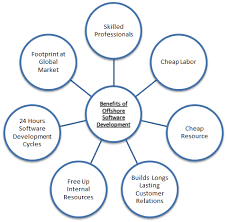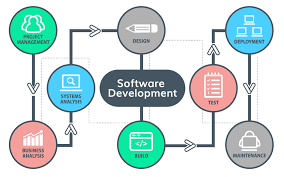Exploring the Future: Robotics and Artificial Intelligence Integration
The Intersection of Robotics and Artificial Intelligence
In recent years, the fields of robotics and artificial intelligence (AI) have seen significant advancements, leading to transformative changes across various industries. From manufacturing to healthcare, the integration of AI with robotics is paving the way for smarter, more efficient systems.
Understanding Robotics and AI
Robotics involves the design, construction, operation, and use of robots. These machines are often programmable by a computer and can carry out a series of actions autonomously or semi-autonomously.
Artificial Intelligence, on the other hand, refers to the simulation of human intelligence processes by machines, especially computer systems. These processes include learning (the acquisition of information and rules), reasoning (using rules to reach approximate or definite conclusions), and self-correction.
The Synergy Between Robotics and AI
The combination of robotics and AI leads to intelligent machines capable of performing complex tasks with minimal human intervention. Here are some key areas where this synergy is making an impact:
- Manufacturing: Intelligent robots are revolutionizing production lines by increasing efficiency and precision while reducing costs.
- Healthcare: Robotic surgical systems enhanced with AI are enabling minimally invasive procedures with greater accuracy.
- Agriculture: Autonomous drones and tractors equipped with AI can monitor crops and optimize farming practices.
- Logistics: Automated warehouses use robotic arms integrated with AI algorithms for sorting, packing, and inventory management.
The Future Prospects
The future holds immense potential for robotics powered by artificial intelligence. As these technologies continue to evolve, we can expect to see even more sophisticated applications that will further enhance productivity across sectors while also addressing global challenges such as climate change and aging populations.
The ethical considerations surrounding the deployment of these technologies are also gaining attention. Ensuring that robots act in accordance with societal values while maintaining transparency in decision-making processes will be crucial as we move forward.
Conclusion
The intersection of robotics and artificial intelligence is not just a technological advancement; it represents a paradigm shift in how we interact with machines. By continuing to innovate responsibly in this field, we can harness its full potential for the betterment of society.
9 Ways Robotics and AI Revolutionize Efficiency, Safety, and Innovation Across Industries
- Increased efficiency in manufacturing processes
- Enhanced precision and accuracy in surgical procedures
- Optimized farming practices through autonomous systems
- Improved logistics operations with automated warehouses
- Greater safety in hazardous environments with robotic assistance
- Innovative solutions for tasks that are repetitive or dangerous for humans
- Cost savings through the use of AI-driven predictive maintenance
- Faster decision-making based on real-time data analysis by AI algorithms
- Potential to address global challenges such as climate change and healthcare disparities
Challenges of Robotics and AI: Job Displacement, Privacy, Ethics, and Dependency
Increased efficiency in manufacturing processes
The integration of robotics and artificial intelligence in manufacturing processes has significantly increased efficiency, transforming the industry landscape. By automating repetitive and labor-intensive tasks, robots equipped with AI can operate tirelessly around the clock, reducing production times and minimizing human error. This leads to higher output levels and consistent product quality. Additionally, AI-driven systems can analyze vast amounts of data in real-time to optimize workflows, predict maintenance needs, and adapt to changes in demand swiftly. As a result, manufacturers experience reduced operational costs and enhanced flexibility, allowing them to respond more effectively to market dynamics.
Enhanced precision and accuracy in surgical procedures
Robotics and artificial intelligence have significantly enhanced precision and accuracy in surgical procedures, transforming the landscape of modern medicine. Robotic surgical systems equipped with AI capabilities allow surgeons to perform complex operations with unparalleled control and dexterity. These advanced systems can filter out hand tremors and provide a magnified, high-definition view of the surgical site, enabling more precise incisions and suturing. As a result, patients benefit from minimally invasive procedures that reduce recovery time, lower the risk of complications, and improve overall outcomes. This technological synergy not only elevates the standard of care but also opens new possibilities for surgical interventions that were once deemed too risky or intricate.
Optimized farming practices through autonomous systems
Autonomous systems powered by robotics and artificial intelligence are revolutionizing farming practices by optimizing efficiency and productivity. These advanced technologies enable precision agriculture, where AI-driven drones and robots monitor crop health, soil conditions, and weather patterns in real-time. By collecting and analyzing data, these systems provide farmers with actionable insights to make informed decisions about irrigation, fertilization, and pest control. This level of precision reduces resource wastage, enhances crop yields, and minimizes environmental impact. As a result, autonomous farming systems not only contribute to sustainable agricultural practices but also help meet the growing global food demand more effectively.
Improved logistics operations with automated warehouses
In the realm of logistics, the integration of robotics and artificial intelligence has revolutionized warehouse operations. Automated warehouses, equipped with advanced robotic systems and AI algorithms, have significantly enhanced efficiency and accuracy in inventory management. These intelligent systems can swiftly sort, pack, and move products with precision, reducing human error and increasing throughput. By optimizing space utilization and streamlining processes, automated warehouses minimize operational costs while improving delivery times. This transformation not only boosts productivity but also allows companies to meet the growing demands of e-commerce with greater agility and reliability.
Greater safety in hazardous environments with robotic assistance
Robotics and artificial intelligence significantly enhance safety in hazardous environments by taking on tasks that are dangerous for humans. In industries such as mining, chemical manufacturing, and nuclear energy, robots equipped with AI can navigate and operate in conditions that would be perilous for human workers. These intelligent machines can handle toxic substances, work in extreme temperatures, and perform complex operations with precision, reducing the risk of accidents and exposure to harmful elements. By deploying robotic systems in these high-risk areas, companies not only protect their workforce but also maintain operational efficiency and compliance with safety regulations.
Innovative solutions for tasks that are repetitive or dangerous for humans
Robotics and artificial intelligence are revolutionizing the way repetitive and dangerous tasks are handled, providing innovative solutions that enhance safety and efficiency. In industries such as manufacturing, robots equipped with AI can perform monotonous tasks like assembly line work with precision and consistency, freeing human workers to focus on more complex and creative responsibilities. In environments that pose risks to human health, such as mining or chemical processing, AI-driven robots can operate in hazardous conditions without the risk of injury or exposure to harmful substances. This not only improves workplace safety but also increases productivity, as these machines can work continuously without fatigue. By leveraging robotics and AI for these tasks, companies can optimize operations while safeguarding their workforce.
Cost savings through the use of AI-driven predictive maintenance
The integration of AI-driven predictive maintenance in robotics offers significant cost savings for businesses across various industries. By utilizing advanced algorithms and machine learning techniques, AI systems can analyze data from sensors embedded in machinery to predict potential failures before they occur. This proactive approach allows companies to schedule maintenance only when necessary, reducing downtime and avoiding costly emergency repairs. Additionally, predictive maintenance extends the lifespan of equipment by ensuring optimal performance, further lowering operational costs. As a result, businesses can allocate resources more efficiently, ultimately leading to increased productivity and profitability.
Faster decision-making based on real-time data analysis by AI algorithms
The integration of robotics and artificial intelligence significantly enhances decision-making processes through real-time data analysis. AI algorithms can rapidly process vast amounts of data, identifying patterns and insights that might be missed by human analysis. This capability allows robots to make informed decisions quickly, optimizing operations across various industries. For instance, in manufacturing, AI-driven robots can adjust production lines on-the-fly to improve efficiency and reduce waste. In healthcare, AI-powered robotic systems can analyze patient data in real-time to assist doctors in diagnosing conditions more accurately and promptly. This ability to make faster decisions based on real-time analysis not only boosts productivity but also leads to better outcomes across different sectors.
Potential to address global challenges such as climate change and healthcare disparities
Robotics and artificial intelligence hold significant potential in addressing some of the world’s most pressing challenges, including climate change and healthcare disparities. By leveraging AI-driven analytics, industries can optimize energy consumption and reduce carbon footprints, contributing to more sustainable practices. In agriculture, autonomous robots equipped with AI can monitor crop health and efficiently manage resources, leading to reduced waste and increased yields. In healthcare, AI-powered diagnostic tools and robotic assistants are improving access to quality care by providing accurate diagnoses and supporting medical professionals in underserved areas. These advancements not only enhance efficiency but also ensure that critical resources are utilized effectively, paving the way for a more equitable and sustainable future.
Job Displacement
The rapid advancement of robotics and artificial intelligence is reshaping industries by automating tasks that were once performed by humans. While this technological progress brings increased efficiency and productivity, it also poses a significant challenge: job displacement. As robots and AI systems become more capable of handling complex tasks, there is a growing concern that human workers in sectors such as manufacturing, logistics, and customer service may face unemployment. This shift could lead to economic instability for individuals who find their skills rendered obsolete by machines. Addressing this issue requires proactive measures, such as reskilling programs and policies that support workforce transitions, to ensure that the benefits of technological innovation do not come at the expense of widespread job loss.
Privacy Concerns
The integration of artificial intelligence in robotics for data analysis and decision-making brings significant privacy concerns to the forefront. As AI systems become more adept at collecting and processing large volumes of personal data, the risk of privacy violations increases. These systems often require access to sensitive information to function effectively, which can lead to unauthorized data collection and potential misuse. Additionally, the complexity of AI algorithms can make it difficult for individuals to understand how their data is being used, raising transparency issues. Data security breaches become a significant threat as well, as cybercriminals target these rich data sources. Ensuring robust security measures and clear regulations is essential to protect individual privacy while leveraging the benefits of AI-driven robotics.
Ethical Dilemmas
The rise of autonomous robots powered by artificial intelligence brings with it a host of ethical dilemmas that society must address. One major concern is accountability: when a robot makes a decision that leads to harm or an unintended consequence, it becomes challenging to determine who is responsible—the manufacturer, the programmer, or the AI itself. Additionally, AI systems can inadvertently perpetuate or even exacerbate biases present in their training data, leading to unfair outcomes in critical areas like law enforcement and hiring. The potential for unintended consequences also looms large; as robots become more integrated into daily life, unforeseen actions could have significant impacts on safety and privacy. These ethical issues necessitate careful consideration and the development of robust frameworks to ensure that AI-driven robotics are aligned with societal values and norms.
Dependency on Technology
The increasing dependency on robotics and artificial intelligence poses a significant concern regarding the potential erosion of human skills. As these technologies take on more tasks, there is a risk that individuals may lose essential skills needed for independent problem-solving and critical thinking. Overreliance on AI systems can lead to complacency, where people become so accustomed to automated solutions that they struggle to perform tasks without technological assistance. This dependency could diminish our ability to adapt to situations where technology may not be available or fails, ultimately reducing our self-sufficiency and resilience in the face of challenges.








